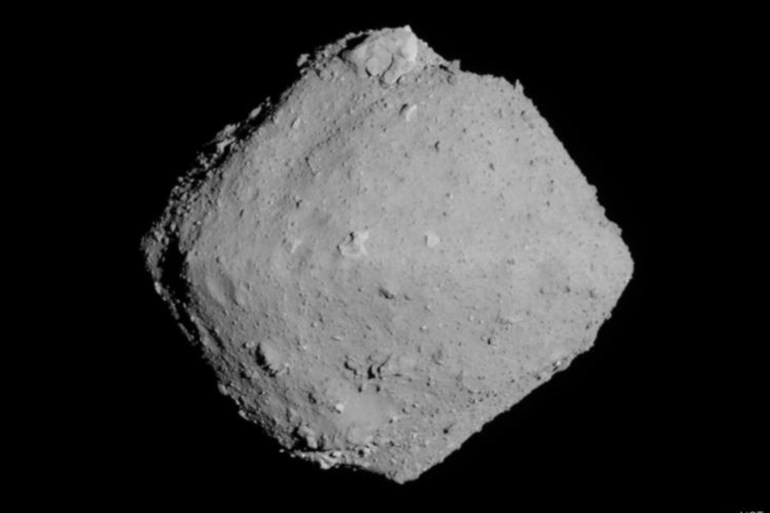About a year ago, the Japanese space probe "Hayabusa 2" returned, carrying samples from the asteroid Ryugu, where scientists expected at the time that it would provide information about what the solar system was like when it arose 4.6 billion years ago, by subjecting that sample For extensive research to reveal the history of the formation of the solar system and its geological components, given that asteroids are remnants of the solar system at its inception.
In this context, the journal Nature Astronomy recently published two research papers of an international scientific team, led by the Japan Aerospace Exploration Agency (JAXA) and the University of Paris-Saclay in France. .
Asteroid Ryugu has remained somewhat unchanged since the formation of the solar system 4.5 billion years ago (French)
The oldest material in the solar system
According to a report published by Science Alert, the analyzes conducted by the "Hayabusa 2" probe while it was in the asteroid Ryugu revealed that it is very dark and porous, and contains in its components some of the most primitive solar system materials.
The report added, "The results were very impressive, given that the asteroid has remained somewhat unchanged since the formation of the solar system 4.5 billion years ago. The sample is one of the best tools so far to understand the composition of the dust with which the bodies of the inner solar system are united."
According to the report, the asteroid Ryugu, formerly known as "JU3 1999" (1999 JU3), is the second asteroid whose sample has been recovered, after the asteroid "Itokawa", which showed a very amazing level of skill and planning.
The porous composition of the asteroid Ryugu is what makes it more similar to meteorites of the carbonaceous chondrite type (American press)
dark carbonaceous asteroid
The first paper was led by astronomer Toru Yada of the Japan Aerospace Exploration Agency (JAXA), which was based on the results of analyzes made by the Hayabusa 2 probe, using remote sensing techniques and measurements made on the asteroid.
Those analyzes showed that Ryugu is a type of carbonaceous asteroid called C-type asteroids, and it is one of the most common types of asteroids in the solar system, constituting 75% of the known asteroids.
This category of asteroids is also distinguished by its carbon-rich rocks, which makes it very dark, so the analysis of the Ryugu sample showed that it is a very dark asteroid.
The results also showed that it is a highly porous asteroid, at 46%, which is more porous than any carbonaceous meteorite had the opportunity to study so far, which was measured by remote thermal imaging.
In the second paper, a team led by astronomer Cedric Bellorgier of the University of Paris-Saclay in France analyzed the composition of the dust, and discovered that the asteroid appears to consist of a very dark matrix, possibly dominated by silicate sheets, or clay-like minerals, despite the lack of a clear wetting signature.
The matrix also contains impurities of other metals, such as carbonates, iron and volatile compounds.
In addition, the samples were found to be very dark, in terms of the light they reflect, even darker than meteorites, indicating either a unique chemical composition, or that Earth's atmosphere somehow illuminates the meteors as they descend.
Scientists from the Japanese Space Agency and the University of Paris-Saclay, France, participated in this research (Reuters)
Explore how our solar system was formed
These two papers agree that Ryugu has a porous composition, which makes it more similar to meteorites of the carbonaceous chondrite or chondrite type.
Compared to all meteorites found so far, their overall chemical composition is very similar to the elemental distribution in the photosphere of the Sun, indicating that they are the most primitive of all known space rocks.
On the other hand, the report stated that the data and observations obtained by remote sensing techniques indicate that the asteroid Ryugu is dominated by materials similar to hydrous carbonaceous chondrite, similar to CI chondrites, but with a darker nature. More porous and brittle.
According to the "Science Alert" report, more in-depth analyzes will lead to discovering more about Ryugu, through which it is possible to learn how our solar system was formed from the remnants of solar dust.

